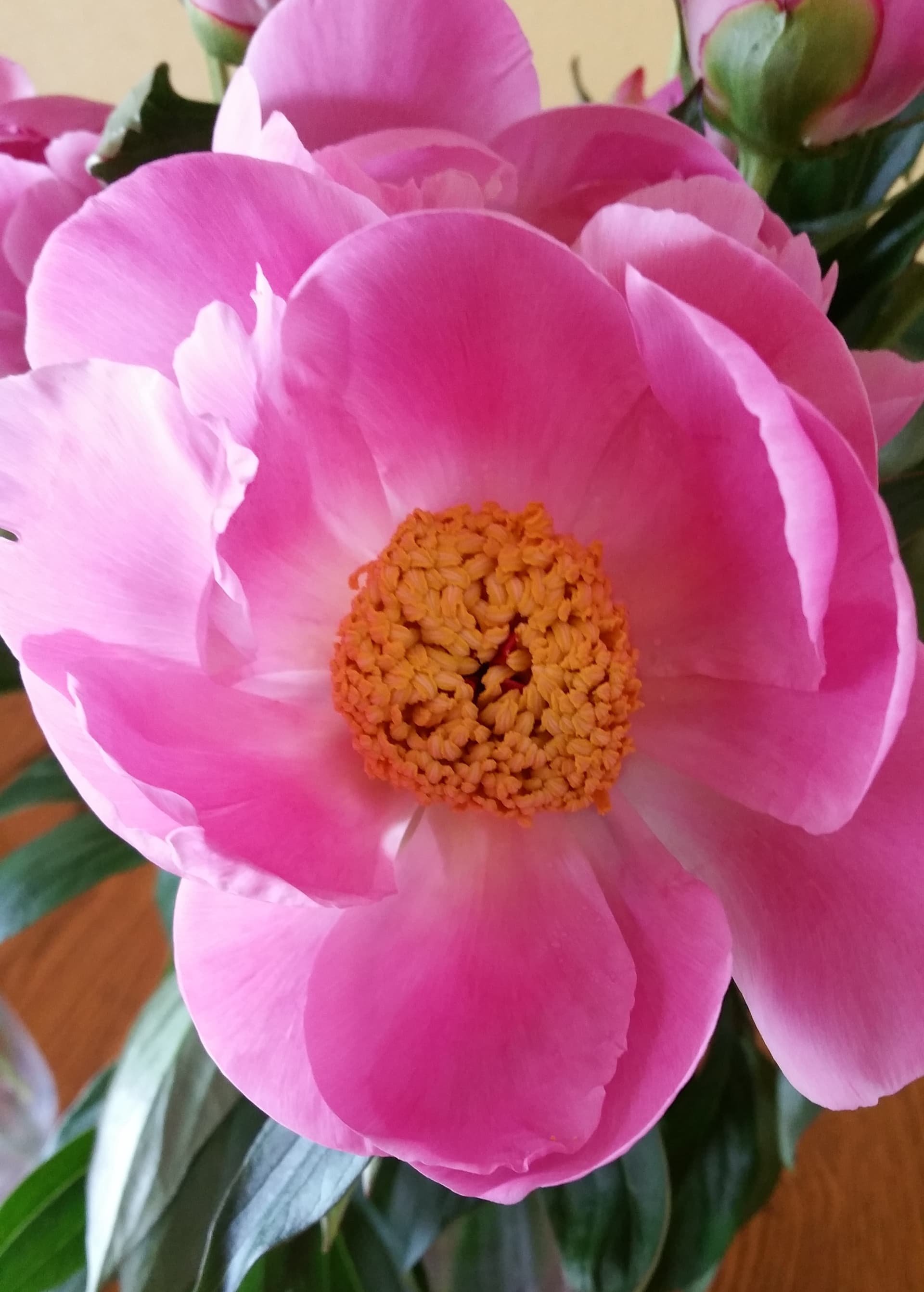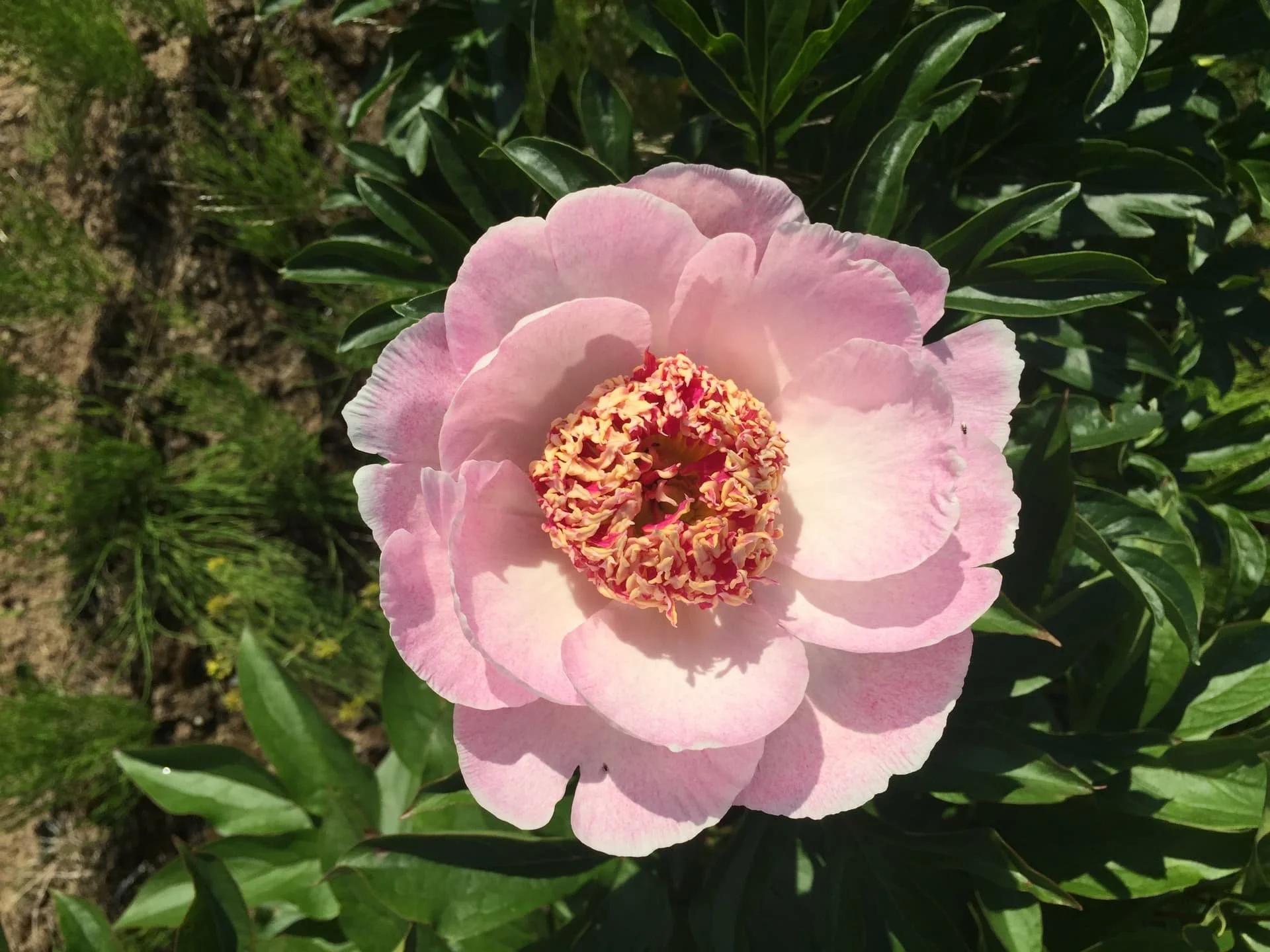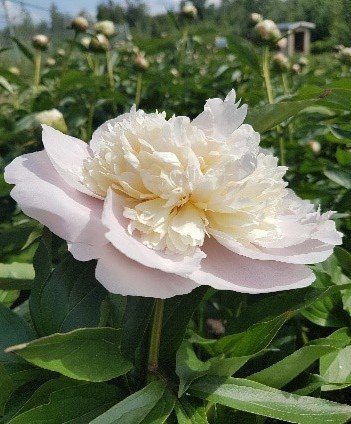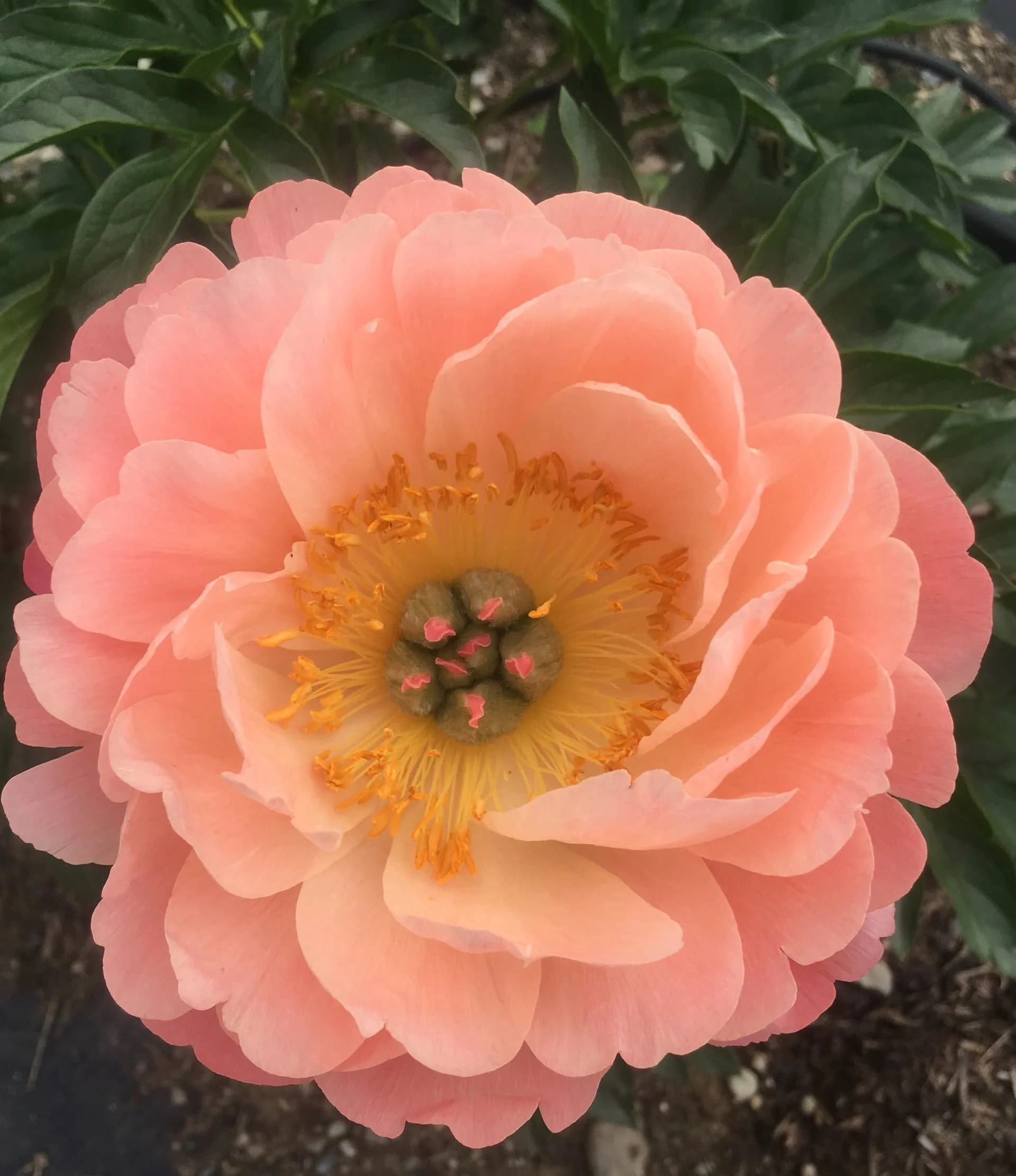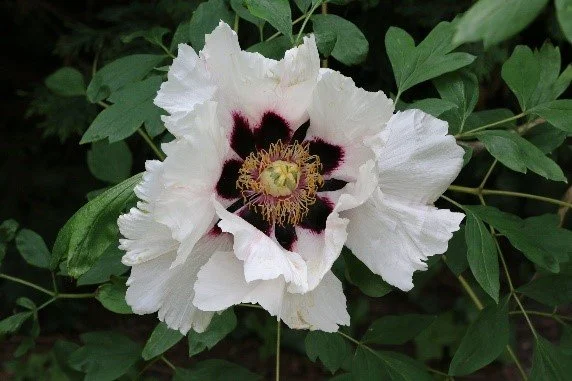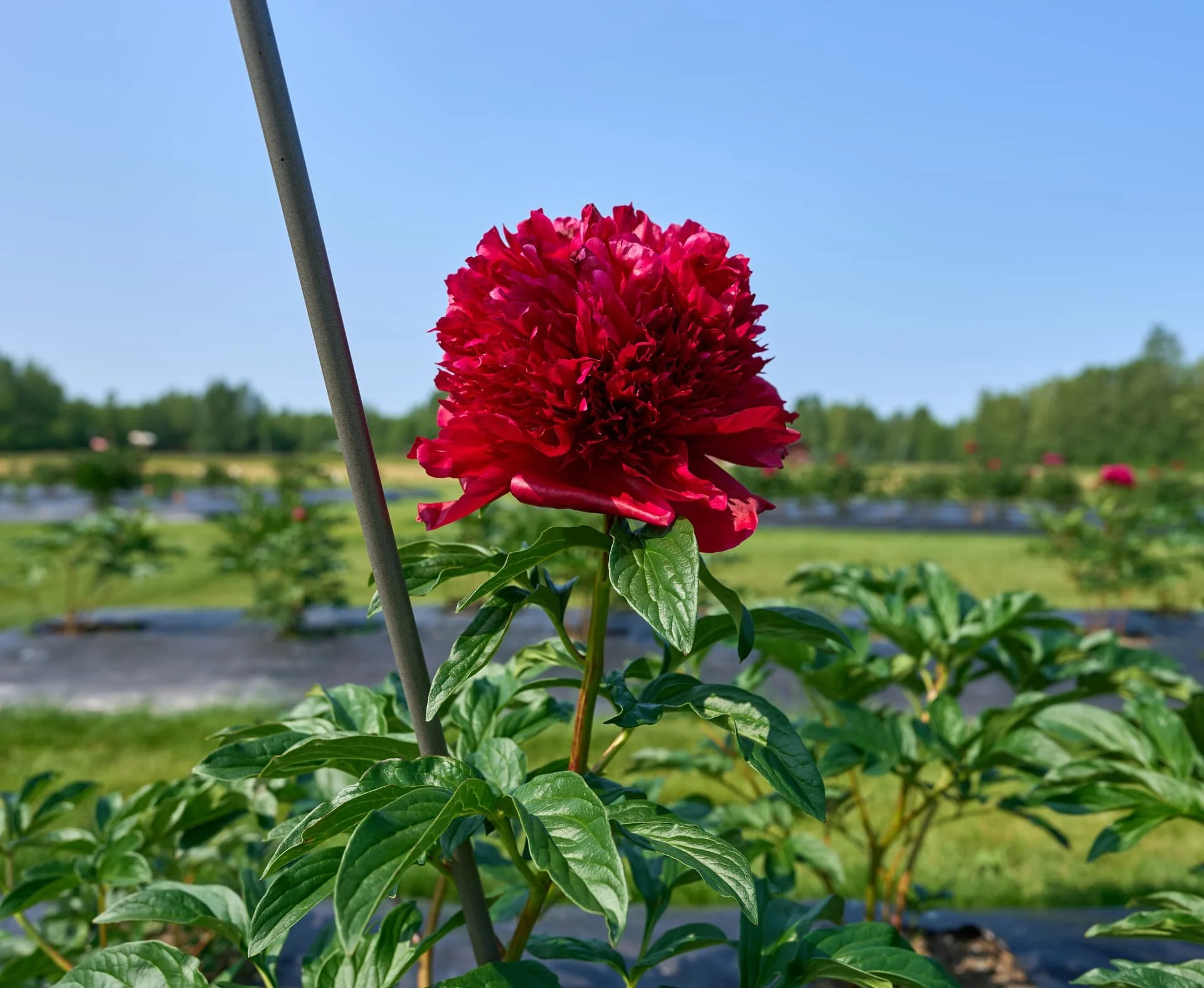A Beginner’s Guide to Peony Bloom Forms
Discussions on peony bloom forms are long and detailed depending on who you ask and where you are located.
Western and Eastern forms represent various characteristics, including appearance, culture, and politics.
The Eastern region has had a great deal of time to expand its descriptions of peony forms. Eastern forms have been studied and fine-tuned over centuries compared to Western forms, which are comparatively young.
The topic of flower forms is fluid, and the dancing of genetics that takes place in creating each form is exciting and complex.
This article highlights the six forms recognized by the American Peony Society.
Single Form
Japanese Form
Anemone Form
Semi-Double Form, including Chrysanthemum, Lotus, and Rose forms
Double Form, including Hundred Proliferate, Golden Circle, and Triple Decker forms
Bomb
Other forms that are noteworthy in the Eastern form are added for comparison and conversation.
The following information is just a scratch on the surface of this broad topic, and by no means is it all-inclusive.
Let’s dive into this plethora of petals and bloom forms and see what we find.
This single form peony is named "Sea Shell.” (1)
Single Form Peonies
The single-form peony is easily recognized by the single row of guard petals that encompass the carpels and stamens.
The three main parts (guard petals, carpels, and stamens) are straightforward and easily identified.
Many singles are hybrids, causing most to be sterile with a lack of seed production and pollen.
Several Japanese varieties fall in the category of single-form peonies.
Harvey Buchite (Hidden Springs Flower Farm) reported a fascinating occurrence.
Many of his Japanese forms suddenly presented as almost full doubles during a notable warm and perfect summer. He first thought that there had been a mistake in planting.
Buchite then tagged the plants for observation. Since then, they have presented as the Single Bloom Form once again. Harvey’s first thought was environmental conditions, so he continues to monitor them.
The single bloom form popularity is continuously growing among garden lovers and florists alike. When used in arrangements, single form peonies make a wonderful impersonation of a poppy.
Staking is advised for stems, but the petals tolerate rain and mild winds well. An excellent example of a single-form peony is ‘Sea Shell’ (Sass, H.P. / Interstate, 1937, USA).
Japanese peony form “Do Tell.” (2)
Japanese Form Peonies
The Japanese form peony is also called ihe Imperial Form Peony, as it was found in the emperor’s garden.
Some of the first Japanese form peonies were imported from Japan. During World War II, consideration was given to naming them Staminodal.
If this consideration had occurred, it might have saved much uncertainty and inaccuracy within the western form that we see today regarding Japanese and Anemone forms.
Caution is advised when relying on published information in discerning these forms. Within Asian countries, the Japanese form is not always recognized. It has been suggested this may come from cultural or even political decisions within the continent of Asia. Stamens have been converted into either staminodes or petaloid.
These forms are highly sought after by gardeners seeking the unusual addition to their home garden. They bloom mid to late according to the peony bloom times. Most grow on hardy, strong stems and bring with them a remarkable aroma, making them a wonderful cut flower.
A common example of the Japanese Bloom Form is ‘Do Tell’ (Auten. 1946, USA).
This is “Bowl of Beauty,” one of the many lovely anemone peony forms! (3)
Anemone Form Peonies
The Anemone form is quite often mistaken for the Japanese form and often registered as such.
An easy way to identify an Anemone is that it has no anthers, and the stamens look like small, thin petals.
This trait is reported in some varieties but not in others. You may be waiting a few years for plant maturity to see this, or they may appear in the side bud flowers.
The Anemone is referred to by some as an advanced Japanese form. They are typically short compared to other peonies, and staking is needed. They are considered early bloomers.
A new generation of peony lovers have fallen in love with this form in contrast to the 1920s when Alice Harding wrote, “…very few good examples of this form.”
The Anemone form cannot be called common or ordinary. They are distinctively unique. One of the most recognizable of the Anemone form is ‘Bowl of Beauty‘ (Hoogendoorn,1949, Netherlands).
This beauty is the “Coral Charm” semi-double peony form.
Semi-Double Bloom Forms
The scope of the semi-double form is impressive; Chrysanthemum, Lotus, and Rose to name a few.
They all share the distinguished center stamens and an abundance of petals, but in some cases, the centers are quite revealed.
At first glance, some varieties may look like doubles, but at second glance, you will see the stamens and carpels hidden in an abundance of petals.
The ‘Coral Charm’ (Wissing,1964, USA) variety stands at the forefront of today’s wish list of many gardeners.
Semi-Double, Chrysanthemum Form
Semi-double The Chrysanthemum form is recognized in the Eastern forms, a semi-double, portrayed with plenty of petals.
It has multiple layers of guard petals that decrease in size as they approach the center of the bloom.
Stamens may be seen, and some of the stamens will lean towards petaloids. Evidence of pistils is quite normal.
Most of these semi-double blooms are very heat tolerant, and one of its biggest stars is ‘Garden Treasure‘ (Hollingsworth, 1984, USA).
Most semi-double blooms are very heat tolerant, and one of its biggest stars is “Garden Treasure.”
The “White Lotus” tree peony is the most widely viewed of the Lotus form peonies.
Semi-Double, Lotus Form
The semi-double lotus form is another highly appreciated Eastern form.
Lotus falls into the semi-double category but needs to be represented, as we see this form in many tree peonies and Chinese varieties.
On a cultural and historical note, many tree peony blooms appear beneath the foliage. This is by design to express an invitation, Wo Yaoqing ni kan kan, I am inviting you to see.
To interpret this in the Western world, we must feel an alluring, mysteriousness in seeing this bloom. Patience and time are required to get the full feeling of this form.
These blooms are large, with stamens and pistils revealed. The conjoining and crisscrossed petals result in a peony form that closely resembles a Lotus. They have a reputation for being full of fragrance.
Be aware of peonies with the name Lotus in them. This does not always indicate a Lotus form peony. ‘White Lotus’ (Chinese variety) tree peony is the most widely viewed of the Lotus form peonies.
Semi-Double, Rose Form
The Semi-double Rose form peonies not only resemble a rose, but they often have a rose fragrance.
“These peonies are loved for their numerous and large petals.”
They are loved for their numerous and large petals. Petal size typically beats the size of the Chrysanthemum form.
It is popular with commercial growers, florists, brides, and gardeners due to its excellent cut flower stamp of approval.
The overall stamen and pistils are petaloid, furthering its rose-like features.
‘Bartzella’ (Anderson, R.F.,1986, USA) is another must-have for many gardeners. From the photo, one can see ‘Bartzella’ is the perfect imposter of a yellow rose; hence the name rose form.
The semi-double rose form peonies like “Bartzella” are loved for their high petal count and sweet fragrance.
And then there’s the ever sought after double form peony like “Sarah Bernhardt.” Isn’t she a beaut?! (4)
Double Form Peonies
Double peony forms are still by far the most sought-after form.
As with semi-doubles, there are numerous forms that include Crown, Semi-Rose, Full Rose, Hundred Proliferate, Golden Circle, and Triple Decker.
The genetic dancing going on here is intricately choreographed.
Most stamens and carpels have completely morphed into petals creating a huge and magnificent ball of delight, but if you dig in, you may find a few tidbits.
Stamens will produce pollen, but you will have to search deep down into the bottom of the bloom to locate them.
Besides being known for their large blooms, they are also generally large bushes and produce strong stems. ‘Sarah Bernhardt‘ (Lemoine, 1906, France) and ‘Paul M.Wild‘ (Wild & Son, 1964, USA) are time-honored double form peonies.
Double, Hundred Proliferate Form
The Double Hundred Proliferate, another Eastern form, is just like it sounds, a hundred or more petals just exploding from what can only be categorized as a double peony.
You have to ask yourself how many flowers are packed into that one bloom.
As with doubles, the stamens have evolved and become a primary part of this huge magnificent bloom.
“You have to ask yourself how many flowers are packed into that one bloom. ”
When looking for one of these monsters, start with the lactiflora, herbaceous peonies.
Notable Hundred Proliferate varieties are ‘Festiva Maxima‘ (Miellez, 1851, France) and ‘Mother’s Choice’ (Glasscock,1950, USA).
Double, hundred proliferate form peonies like “Mother’s Choice” has a hundred or more petals in each bloom.
Double, The Golden Circle Form
Double The Golden Circle (Eastern form) is another double form that’s just pure fun, and we cannot leave it out.
It has large outside petals, followed by customary stamens, and ending with petaloids.
This creates the Golden Circle look. Extraordinarily large blooms are often found in this bloom form.
“Extraordinarily large blooms are often found in this bloom form. ”
This unusual form can also be found in juvenile plants or when plants are not sufficiently fertilized.
Because of that, this form can be considered transient and inconstant.
The ‘Cheddar Surprise‘ (Klehm. R.G., 1980, USA) shows the perfect Golden Circle; although in full maturity and bloom, you may have to look closely to find that inner circle of stamens.
Double, Triple Decker Form
Double, The Triple Decker (Eastern form) is well seen in an all-time favorite ‘Sorbet‘.
It is a Chinese variety found in Siberia and Mongolia, discovered in the 1980s by a Dutch horticulturist in a South Korean orchard.
It was imported for commercial production, and one look tells you why. It is full of fragrance, color, and a distinctive triple layer of mounding petals.
Double The Triple Decker is well seen in the favorite peony “Sorbet.”
If there’s going to be an explosion of petals, let it be a peony! This firecracker is “Red Charm.” (5)
The Bomb Peony Form
The Bomb form is another form with an explosion of petals.
The guard petals form the stage for a sphere of stamens that have transformed into petals, creating the “bomb” shape.
The Bomb form lacks consistency in many varieties.
It’s often referred to as a pom-pom look, and the Bomb form packs in the petals, fashioning an explosion upon releasing its petals producing a considerable amount of disarray. That may be the reason it’s called the Bomb.
Two exceptional Bomb forms are ‘Monsieur Jules Elie‘ (Crousse, 1888, France) and ‘Red Charm‘ (Glasscock, 1944, USA).
Among the six main bloom forms recognized by the American Peony Society, you can go further into detail and classifications by a simple search or in most peony books.
The history and evolution of the different classification systems are fascinating and sure to deepen the love we all share for this celebrated Queen of the Garden.
All photos are used with permission and reference the original source.
Photography Credit
(1) D. Bowlan
(2) Alaska Peony Cooperative
(3) T. Lyons, Alaska Peony Society
(4, 5) Alaska Peony Cooperative


